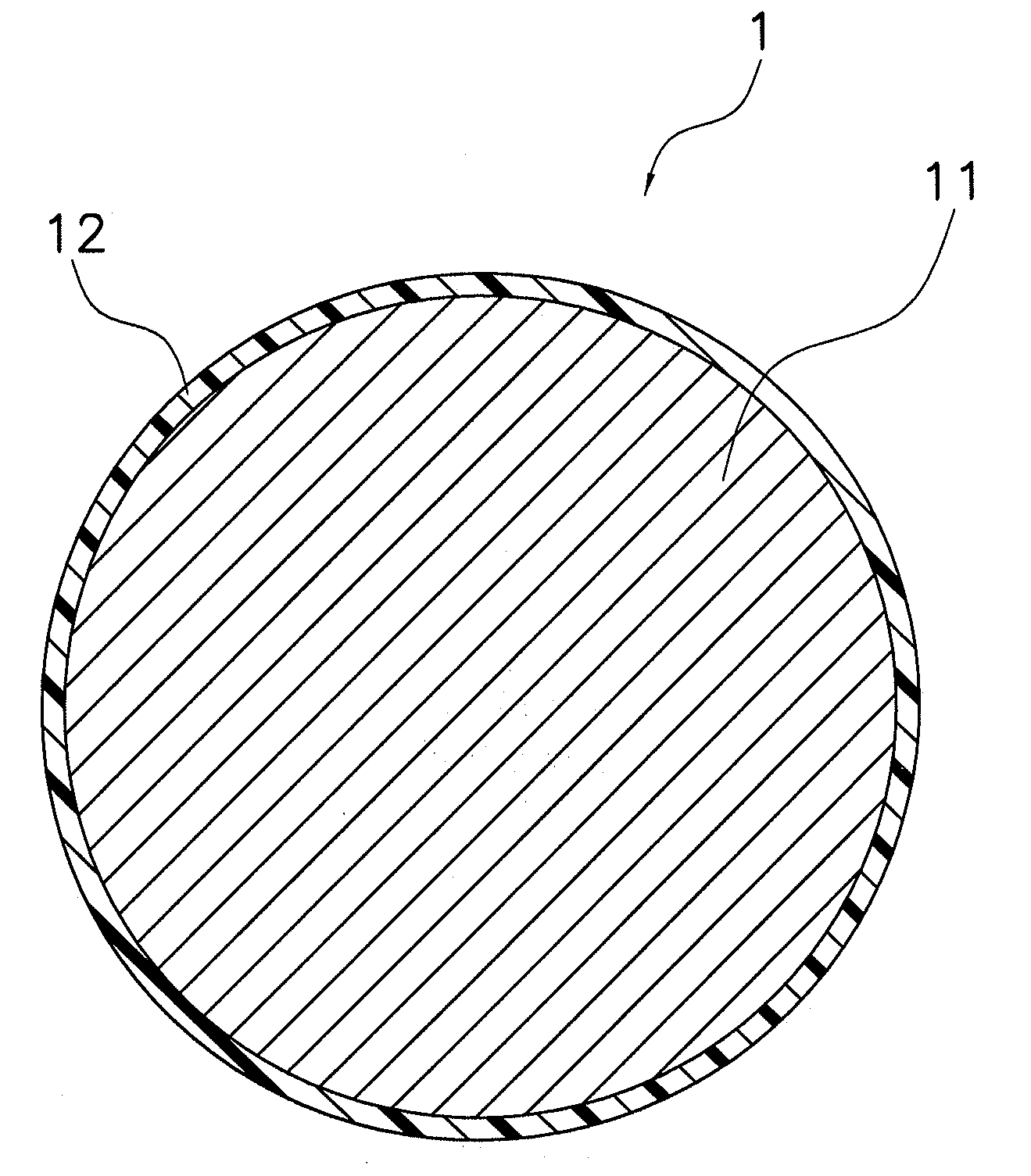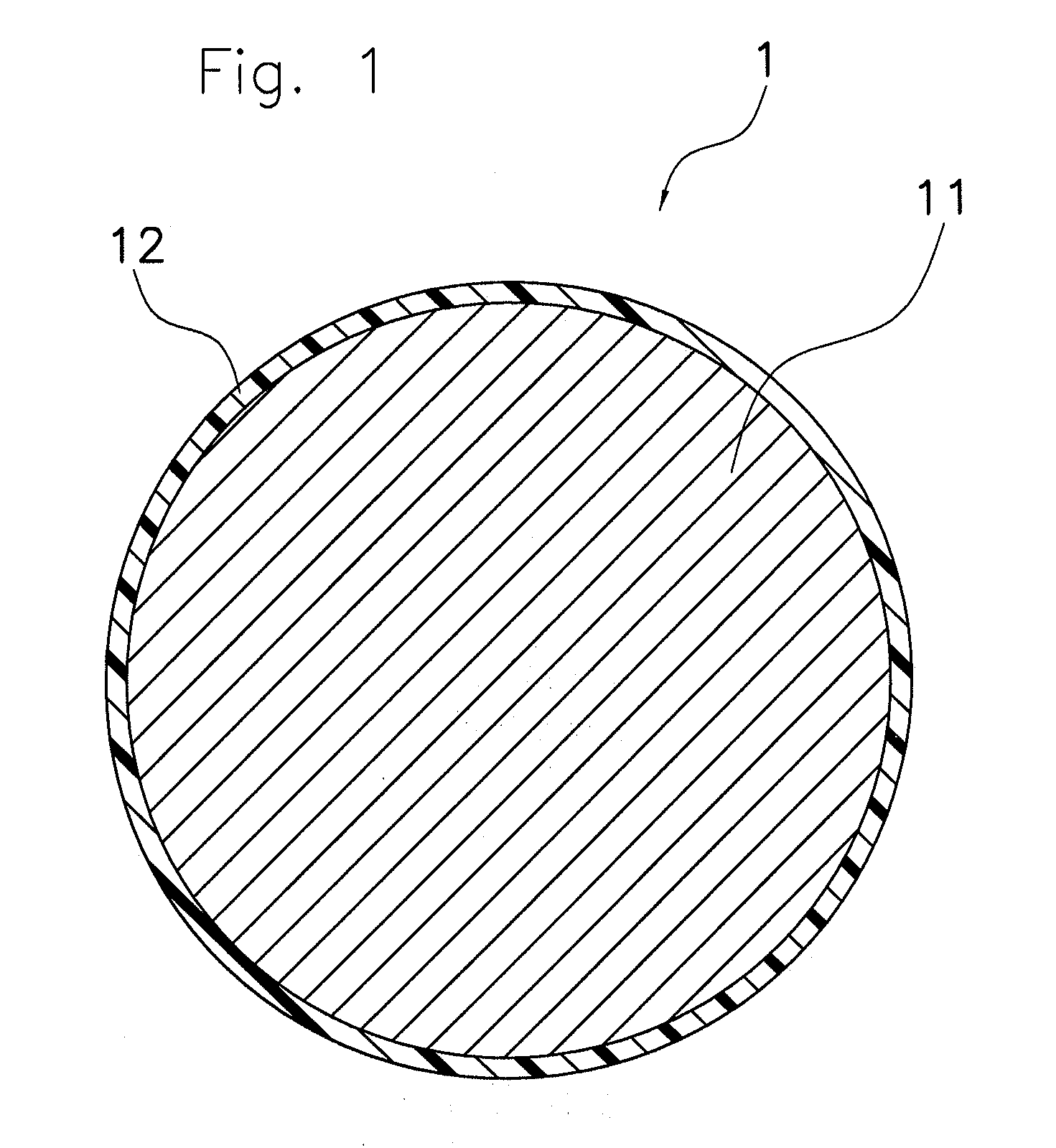Tetrafluoroethylene/hexafluoropropylene copolymer and the production method thereof, and electrical wire
a technology of hexafluoroethylene and production method, which is applied in the direction of plastic/resin/waxes insulators, organic insulators, coatings, etc., can solve the problems of lump size, melt-processable fluororesin composition, and inability to substantially reduce the occurrence frequency of lumps, so as to reduce the defect of high-speed extrusion coating, improve moldability in melt extrusion molding, and reduce the effect of transmittance loss
- Summary
- Abstract
- Description
- Claims
- Application Information
AI Technical Summary
Benefits of technology
Problems solved by technology
Method used
Image
Examples
working example 1
Synthesis Example 1
[0050]8163.5 lbs. of deionized water (including 3.5 lbs. of ammonium ω-hydroxyfluorocarbonate) was added into a glass-lined autoclave with an agitator (12,000 L volume). After that, the autoclave was vacuumed and filled with nitrogen gas well. After this, after the autoclave was vacuumed, 8459 lbs. of HFP was added into the autoclave. While the deionized water and HFP were agitated vigorously in the autoclave, the inner temperature was set at 89.6 F and 950 lbs. of TFE and 92 lbs. of PPVE were added into the autoclave. Next, the inner pressure of the autoclave was set at 150.6 psi, and 51.8 lbs. of 8 wt % di(ω-hydroperfluorohexanoyl) peroxide (abbreviated to “DHP” in the following) perfluorohexane solution was added into the autoclave to initiate polymerization. 51.8 lbs. of 8 wt % DHP perfluorohexane solution was added into the autoclave, and 1.7 psig of the inner pressure was reduced 2 hours later and 4 hours later from the initiation of the polymerization. Furt...
working example 2
Synthesis Example 2
[0075]After the pellet obtained in the synthesis example 1 was inserted into a vacuum vibration type reactor of VVD-30 (manufactured by OKAWARA MFG. CO., LTD.), the pellet was heated to 200 degree C. After the reactor was vacuumed, F2 gas diluted by 20 wt % with N2 gas was introduced into the reactor up to the atmospheric pressure. F2 gas was introduced again after the reactor was vacuumed three hours later from the first introduction of F2 gas. The operation of the F2 gas introduction described above and vacuuming was carried out 6 times. After the reaction was completed, F2 gas in the reactor was replaced with N2 gas and deaeration of the pellet was carried out at 180 degree C. for 8 hours. The composition of the pellet after the reaction was TFE 87.9:HFP 11.1: PPVE 1.0 in weight. The melting point was 256.8 degree C. The MFR at 372 degree C. was 23.5 g / 10 minutes. The sum of the number of thermally unstable end group and the number of —CF2H end group per 1×106 ...
production example 1
[0077]Wire coating was carried out using the FEP of the synthesis example 2 described above as an insulating coating material (core material). After this, a single braid was formed onto the FEP and then the FEP of the synthesis example 2 as a protective coating (sheath material) was coated onto the single braid to prepare a coaxial cable of RF113.
[0078]The attenuation of the coaxial cable obtained was measured with a network analyzer of HP8510 C (Hewlett-Packard Development Company, L.P.). As a result, the attenuation was 5.1 dB / meter at 6 GHz.
[0079]The condition for the extrusion coating an electrical wire (core material) is the following.
[0080]a) Conductive core: copper coated with silver (7 / 0.08 mm twisted conductive wire)
[0081]b) Coating thickness: 0.23 mm
[0082]c) Diameter of an insulated electrical wire: 0.7 mm
[0083]d) Take-over speed of an electrical wire: 60 meters / minute
[0084]e) Condition for melt molding (extrusion)[0085]Diameter of shaft of cylinder=2 inches[0086]rotationa...
PUM
| Property | Measurement | Unit |
|---|---|---|
| storage modulus | aaaaa | aaaaa |
| storage modulus | aaaaa | aaaaa |
| diameter | aaaaa | aaaaa |
Abstract
Description
Claims
Application Information
 Login to View More
Login to View More - R&D
- Intellectual Property
- Life Sciences
- Materials
- Tech Scout
- Unparalleled Data Quality
- Higher Quality Content
- 60% Fewer Hallucinations
Browse by: Latest US Patents, China's latest patents, Technical Efficacy Thesaurus, Application Domain, Technology Topic, Popular Technical Reports.
© 2025 PatSnap. All rights reserved.Legal|Privacy policy|Modern Slavery Act Transparency Statement|Sitemap|About US| Contact US: help@patsnap.com


